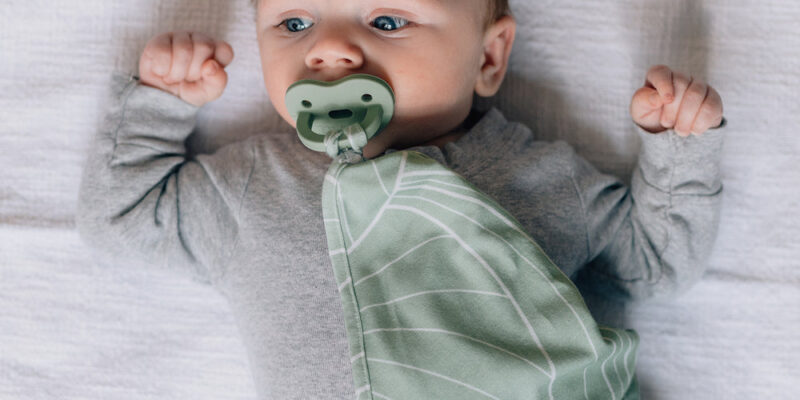
Parenting involves making numerous decisions about what will best support your child’s comfort, development, and well-being. Among the many essentials for newborns and toddlers, a lovey is one of the most cherished and beneficial items you can introduce. Loveys serve as comfort objects that help babies feel secure, providing emotional support and aiding their development in several ways. Whether it’s a soft blanket, a stuffed animal, or a combination of both, a lovey can become your baby’s first companion in their early years.
In this article, we’ll explore everything you need to know about loveys, including their uses, benefits, and how to safely introduce them to your child.
What Is a Lovey?
A lovey is a small, soft object, typically a blanket or a plush toy, that babies and toddlers use for comfort. Sometimes referred to as a security blanket, a lovey is something your baby can hold onto during sleep or when they are feeling anxious or in need of reassurance.
Loveys are often introduced early on as part of a baby’s bedtime routine, though they can also be used during other moments of transition, such as daycare drop-offs or travel. These comfort objects often become cherished items that provide emotional security and help babies self-soothe in unfamiliar or stressful situations.
The Role of Loveys in Child Development
Loveys play an important role in emotional development and can support your child in learning how to self-regulate. As your baby grows and begins to experience new environments, a lovey can offer a sense of familiarity and safety.
1. Emotional Comfort and Security
One of the most significant benefits of a lovey is the emotional comfort it provides. Babies naturally crave security, especially during times of separation from parents, such as at bedtime or during transitions like going to daycare. A lovey acts as a surrogate for parental presence, giving babies something familiar to hold onto, which helps reduce anxiety and offers emotional reassurance.
2. Self-Soothing
Babies often wake up in the middle of the night or feel restless during naps. Loveys encourage self-soothing, allowing babies to calm themselves without parental intervention. By hugging or holding their lovey, babies can soothe themselves back to sleep, leading to more independent sleep habits over time.
3. Creating Routines
Introducing a lovey as part of your baby’s bedtime routine can be very effective. When babies associate the lovey with comfort and sleep, it becomes easier to create consistent routines that signal to your child when it’s time to rest. Loveys become a familiar part of the process, reinforcing sleep cues and aiding in smoother transitions between playtime and bedtime.
How to Safely Introduce a Lovey
While loveys are wonderful comfort items, it’s important to introduce them in a way that is safe for your child, especially when they are infants.
1. Age and Safety Considerations
The American Academy of Pediatrics recommends waiting until your baby is around 12 months old before introducing a lovey into the crib to avoid the risk of suffocation. Before this age, your baby can interact with a lovey during supervised awake time but should not sleep with it unsupervised.
2. Choosing the Right Lovey
When selecting a lovey, look for one that is small, soft, and made from breathable materials. Avoid loveys with buttons, beads, or small parts that could pose a choking hazard. The best loveys are typically a combination of a blanket and a plush toy—something that’s easy to grasp, soft to the touch, and durable enough to withstand frequent washing.
3. Introduce the Lovey Gradually
To help your baby bond with their lovey, incorporate it into comforting and bonding moments. You can use the lovey during feedings, snuggle time, or when reading bedtime stories. Over time, your baby will begin to associate the lovey with feelings of security and relaxation.
Benefits of Loveys for Babies and Toddlers
Loveys are far more than just cute accessories—they offer a wide range of benefits that support your child’s emotional and social development.
1. Reduces Separation Anxiety
As babies grow and become more independent, they often experience separation anxiety, especially when apart from their parents. A lovey serves as a transitional object, giving your baby a familiar sense of security even when you’re not around. This is particularly helpful during situations like daycare drop-offs, visits to unfamiliar places, or staying with a babysitter.
2. Aids in Independent Sleep
Establishing healthy sleep habits can be challenging for new parents. Loveys can support independent sleep by helping babies feel more relaxed and secure during naptime or nighttime. When your child can self-soothe with their lovey, they are more likely to sleep through the night without needing parental intervention. This not only benefits the baby but also gives parents a well-deserved break.
3. Provides Comfort During Stressful Situations
Stressful situations like doctor’s appointments, car rides, or changes in routine can cause discomfort for babies. Having a familiar lovey nearby provides a sense of stability and security, helping your baby remain calm during these moments. For toddlers, a lovey can also help them navigate the emotional challenges of potty training, starting preschool, or learning new social skills.
4. Encourages Emotional Independence
While loveys provide comfort and security, they also help babies and toddlers develop emotional independence. By learning to self-soothe with their lovey, children can begin to manage their own emotions without relying solely on parental reassurance. This early form of emotional regulation is an important developmental milestone that will continue to evolve as your child grows.
5. Fosters Attachment
Many babies develop strong attachments to their loveys, and these attachments can last well into childhood. These cherished objects often become symbols of safety and love, offering not only emotional support but also a tangible reminder of comfort. As your child grows, their lovey may remain a treasured item, carrying memories of early childhood well into later years.
How Long Will Your Child Use a Lovey?
There is no set timeline for when children outgrow their loveys. Some toddlers naturally phase out their attachment to the comfort object as they develop greater independence, while others may hold onto it for several years. The attachment to a lovey is completely normal, and there’s no need to rush your child into letting go of their beloved comfort item.
Conclusion: Why Every Baby Needs a Lovey
A Milk Snob lovey is more than just a soft, cuddly object—it’s a source of security, comfort, and emotional growth for your child. By helping babies self-soothe, reducing separation anxiety, and providing comfort during stressful situations, loveys play a critical role in both emotional and social development. Whether it’s a blanket, stuffed animal, or a combination of the two, introducing a lovey into your baby’s life can create lasting positive effects on their sense of security and independence.
So, as you prepare for your baby’s arrival or look for ways to support your child’s development, consider incorporating a lovey into your daily routine. This simple yet powerful comfort object can provide immeasurable benefits for both you and your baby.










